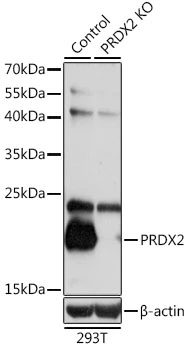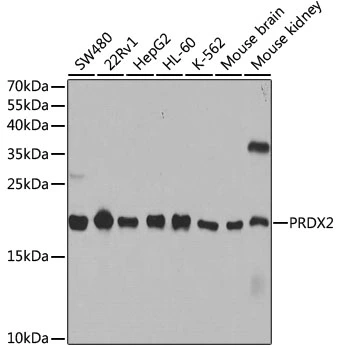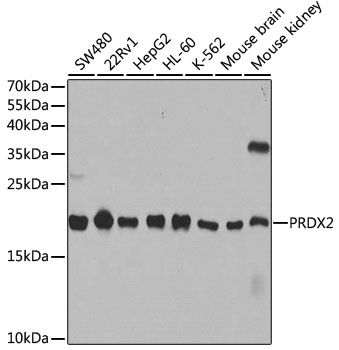
WB analysis of normal (control) and knockout (KO) 293T cell lysate using GTX54610 PRX II antibody. Dilution : 1:1000 Loading : 25microg per lane
PRX II antibody
GTX54610
ApplicationsImmunoFluorescence, Western Blot, ImmunoCytoChemistry
Product group Antibodies
TargetPRDX2
Overview
- SupplierGeneTex
- Product NamePRX II antibody
- Delivery Days Customer7
- Application Supplier NoteWB: 1:500 - 1:2000. ICC/IF: 1:50 - 1:200. *Optimal dilutions/concentrations should be determined by the researcher.Not tested in other applications.
- ApplicationsImmunoFluorescence, Western Blot, ImmunoCytoChemistry
- CertificationResearch Use Only
- ClonalityPolyclonal
- ConjugateUnconjugated
- Gene ID7001
- Target namePRDX2
- Target descriptionperoxiredoxin 2
- Target synonymsepididymis secretory sperm binding protein Li 2a; HEL-S-2a; natural killer cell-enhancing factor B; NKEFB; NKEF-B; peroxiredoxin-2; PRP; PRX2; PRXII; PTX1; TDPX1; thiol-specific antioxidant 1; thioredoxin peroxidase 1; thioredoxin-dependent peroxide reductase 1; thioredoxin-dependent peroxiredoxin 2; torin; TPX1; TSA
- HostRabbit
- IsotypeIgG
- Protein IDP32119
- Protein NamePeroxiredoxin-2
- Scientific DescriptionThis gene encodes a member of the peroxiredoxin family of antioxidant enzymes, which reduce hydrogen peroxide and alkyl hydroperoxides. The encoded protein plays an antioxidant protective role in cells, and it may contribute to the antiviral activity of CD8(+) T-cells. The crystal structure of this protein has been resolved to 2.7 angstroms. This protein prevents hemolytic anemia from oxidative stress by stabilizing hemoglobin, thus making this gene a therapeutic target for patients with hemolytic anemia. This protein may have a proliferative effect and play a role in cancer development or progression. Related pseudogenes have been identified on chromosomes 5, 6, 10 and 13. [provided by RefSeq, Mar 2013]
- Storage Instruction-20°C or -80°C,2°C to 8°C
- UNSPSC12352203










